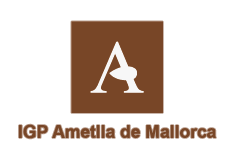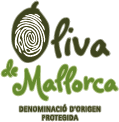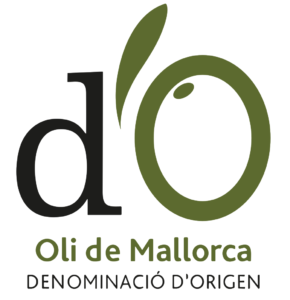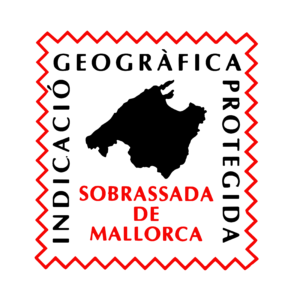Mallorcan llengües, or Mallorcan ikat, is a traditional Mallorcan fabric recognized for its vibrant colors and complex patterns. Produced using the ikat reserve dyeing technique, this fabric has its roots in the ancient Silk Road. Even today, local artisans keep this tradition alive, creating unique pieces that symbolize the island’s culture and identity.
01
02
03
History
Origin
Places
04
05
06
Stories
Products
Related
Mallorcan llengües fabric, also known as roba de llengües or Mallorcan ikat, is a traditional Mallorcan fabric with a rich history and unique design. It is characterized by its flamboyant motifs and vibrant colors, which are achieved through a reserve-dyeing technique called ikat. This technique involves dyeing the yarns before weaving, thus creating complex and irregular patterns that resemble flames or tongues of flame.
Cloth of tongues has its roots in the ancient Silk Road, and is believed to have come to Mallorca via traders traveling between Asia and Europe. Over the centuries, tongues cloth has become a symbol of Mallorcan culture and identity, and is used for a wide variety of products, such as clothing, household linens and accessories.
Today, cloth of tongues is still produced by local artisans using traditional techniques, keeping this ancient tradition alive and ensuring its continuity for future generations. Tongue cloth is a cultural treasure of Mallorca, and its beauty and uniqueness make it a coveted piece by collectors and fashion lovers from all over the world.
The origin of Mallorcan tongue cloth can be traced back to the ancient Silk Road, through which this reserve dyeing technique, known as ikat, came from Asia to Europe. It is believed that it was traders traveling along this route who introduced ikat to Mallorca, possibly via Valencia, where there was already a tradition of producing similar fabrics.
The history of cloth of tongues in Mallorca can be traced back to the 18th century, when the first samples of upholstery and wall coverings with this fabric began to be documented in stately and bourgeois houses on the island. Initially, the cloth of tongues was made of silk, but at the beginning of the 19th century, with the expansion of its use in town and country houses, it began to be produced also in cotton, making it more accessible to different social classes.
During the 19th and early 20th centuries, cloth of tongues lived its golden age in Mallorca, being used not only for upholstery and decoration, but also for clothing, curtains, cushions and other household items. However, with the advent of industrialization and mass production of fabrics, cloth of tongues became less popular and its production declined considerably.
Fortunately, in recent decades there has been a resurgence of interest in Mallorcan cloth of tongues, thanks to the work of local artisans who have recovered traditional production techniques and have been able to adapt the designs to contemporary tastes. Today, the cloth of tongues is once again valued as a cultural treasure of Mallorca, and its beauty and uniqueness make it a highly appreciated product by both the island’s inhabitants and visitors.
The ikat technique, used to create the Mallorcan cloth, is a reserve dyeing process that is done before weaving the yarns. It consists of binding or reserving certain sections of the threads with waterproof materials, such as string or wax, to prevent them from absorbing the dye in those areas. Once the threads are properly tied, they are dipped into the dye, which penetrates the unreserved areas, creating the characteristic flaming patterns and vibrant colors of the tongue cloth.
The process of tying the threads is crucial to the creation of the designs, as it determines the shape and size of the patterns that will appear on the final fabric. Mallorcan artisans use ancestral techniques passed down from generation to generation to create the intricate designs of the cloth of tongues, which are usually geometric and with faded edges, simulating the effect of flames.
Once the threads are dyed, they are untied and placed on the loom to weave the cloth. As the threads are intertwined, the patterns created during the dyeing process emerge, resulting in the tongues cloth with its characteristic flamboyant appearance. It is important to note that each piece of tongue cloth is unique, as the process of tying the threads is manual and there may be slight variations in the designs.
The ikat technique is an ancient art that requires skill, patience and creativity. The Mallorcan artisans who keep this tradition alive are true guardians of a cultural legacy that has endured over the centuries, and that today continues to be valued and appreciated both in Mallorca and in the rest of the world.
Originally, these fabrics were called “flamules” because their flaming motifs were reminiscent of the flames of a bonfire. However, over time, the name evolved to “teles de llengües” (tongues fabrics), as the patterns also resembled tongues of flame. This name change reflects the evolution of the perception of these fabrics over time and how their meaning has adapted to Mallorcan culture and language.
During the 19th century, the teles de llengües became a symbol of social status in Mallorca. Wealthy families competed to have the most elaborate and colorful fabrics in their homes as a sign of their wealth and refinement. This “fever” for the “teles de llengües” boosted the production and creativity of the artisans, who developed new designs and color combinations to satisfy the demand of their most demanding customers.
In addition, there is a legend that Mallorcan “teles de llengües” have magical properties. It is said that these fabrics protect those who possess them from evil spirits and attract good luck. Although there is no scientific evidence to support this belief, the legend adds a touch of mystery and charm to the history of these fabrics, which remain a symbol of Mallorcan culture and tradition.
Get to know the daily life of Mallorcan producers
If you like
, you’ll love these products
Sign up for our newsletter and every month you will receive the most fascinating and surprising stories about the traditions of Mallorca, directly from the voice of our producers. Discover the unique and personal experiences that make each product a story.
Get to know the daily life of Mallorcan producers
Get to know the daily life of Mallorcan producers

The place for local products from Mallorca
Palma de Mallorca
sales@mallorcamade.com
+34 658907615
Mallorca Made is the meeting point between the cultural richness of Mallorca and the international community. Mallorca Made offers international customers not only a place to explore the rich variety of products this island has to offer, but also an account of the history and stories behind each creation.
We pride ourselves on being catalysts of local commerce, promoters of the authenticity and tradition of Mallorca, taking its essence beyond the sea that surrounds us.
Discover, connect and celebrate with us the unique identity of our island.








© 2024 Amara, ingeniería de marketing | All rights reserved | Digital strategy: Amara, ingeniería de marketing